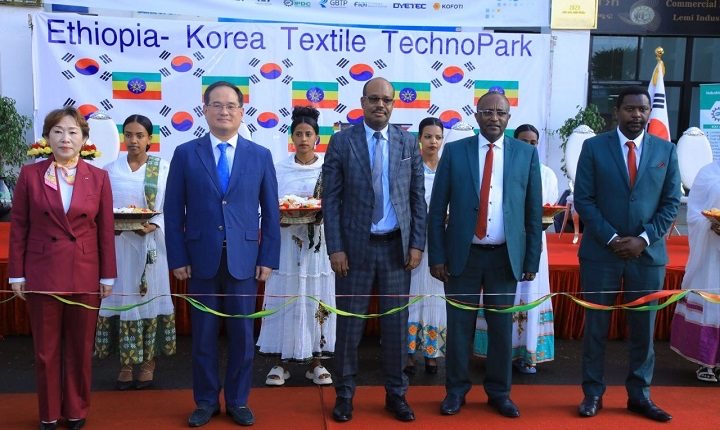The utilisation of technology to disrupt agricultural sectors has witnessed a swift global ascent, particularly in Africa, where agriculture remains a key sector for food security, employment, and economic advancement. Agritech(agricultural technology) is the transformative catalyst for this change. Advanced application of technology in agriculture is common among international countries like South Korea, Japan, the Netherlands, France, etc. with developed economies and substantial agricultural output. The need to sustain and expand their agricultural yields has driven these nations to invest significantly in Agritech innovation.
Making up a great percentage of the continent’s GDP and providing sustenance and economic support, challenges such as unpredictable weather, population growth, soil depletion, deforestation, water scarcity, and a lack of technical expertise still plague countries in Africa. Agritech startups are looking to scale and disrupt the agricultural sector positively, addressing these challenges through technology. As reported by Disrupt-Africa, Agritech startups in Africa are growing fast, with investments exceeding $19 million since 2016 and an increase in the number of startups operating in the sector. Agritech is bridging the gap between smallholder farmers and broader markets. These sustainable and inclusive value chains largely benefit farmers and the economy. They improve productivity, increase yields, and establish innovative connections with buyers and suppliers.
Many African countries are maximising the potential of Agritech to address climate, food, and poverty challenges in the agricultural sector. The majority of these nations are far from the leading agricultural hubs on the continent, like Sudan, yet they have recognised that technology and innovation in agriculture will help elevate their income levels and ensure communities have access to food. Kenya and Nigeria currently dominate the Agritech market, followed by Ghana, and despite the growth of Agritech startups, the market remains largely untapped, as indicated by the 2018–2019 Digitalization of African Agriculture Report by the CTA.
Blessed with fertile land, diverse climates, and abundant water resources, Sudan holds the key to not only meeting its own food security needs but also representing itself as a regional leader in agricultural technology innovation. The major crops grown in Sudan include cotton, peanuts, sesame, gum arabic, sorghum, and sugarcane, which are the primary contributors. Subsistence farming is widespread in Sudan, particularly in low-rainfall savannas. The main subsistence crops are sorghum and millet, complemented by smaller amounts of wheat, corn, and barley. Livestock, including donkeys, goats, poultry, cattle, and sheep, are commonly raised by households in rural areas.
Sudan’s immense agricultural potential faces challenges. For decades, ambitious projects aimed at making Sudan a major food producer encountered setbacks due to poor planning and government inefficiency. The existing severe food insecurity in the country has been exacerbated by the ongoing crisis, leading to a significant anticipated increase in hunger levels. The conflict between rival military factions has resulted in the displacement of over 2 million people, creating a humanitarian emergency. To address this situation, the FAO made plans to assist vulnerable farmers and their families with agricultural inputs (seeds, tools, and fertiliser).
The Food and Agriculture Organisation of the United Nations has warned that 90 percent of the top layer of soil where farmers grow their crops globally will be at risk by 2050 due to unsustainable agricultural practices that have led to land degradation. Agriculture consumes 70% of the world’s fresh water supply, creating water stress, which is expected to affect over half of the global population by 2025. With a projected population of 10 billion by 2050, food demand is expected to rise by 59–98%, necessitating a 50% increase in food production. Africa is not left out of this equation. The growing population and demand for food will need to be met locally, considering that the majority of countries meet food security demands through imports.
Repositioning Sudan as an Agritech hub requires a strong emphasis on research and development. Collaborations between government institutions, private enterprises, and research organisations can pave the way for innovation in agricultural technology. Establishing research centres and incubators dedicated to Agritech will encourage the development of cutting-edge solutions tailored to the unique needs of Sudanese agriculture. Adopting Agritech practices like hydroponically grown greens, sensor-based irrigation systems, ultraviolet equipment for crop resistance, and insect-based organic fertilisers will contribute to sustainability and profitability.
To accelerate the adoption of Agritech solutions, a comprehensive strategy for technology transfer and capacity building is essential. Training programmes and workshops can be organised to educate farmers, extension workers, and agricultural professionals on the latest technologies. Partnerships with international organisations and technology firms can facilitate knowledge exchange and provide access to state-of-the-art tools and practices.
Attracting investment is critical for building the necessary infrastructure to support a thriving Agritech ecosystem. This includes upgrading rural roads, establishing storage facilities, and enhancing market linkages. The government can incentivize private sector involvement by offering tax breaks and creating a favourable regulatory environment. Public-private partnerships can play a pivotal role in funding large-scale projects that aim to modernise the agricultural supply chain.
Sudan’s ambition to become an Agritech hub should not be confined within its borders. Regional collaboration with neighbouring countries can foster a collective approach to addressing common challenges, sharing resources, and promoting regional food security. Joint research initiatives, technology exchanges, and collaborative policy frameworks can create a more robust and interconnected agricultural ecosystem in Northeast Africa.
As the continent grapples with food security concerns and a growing population, Agritech holds the promise of a better future. However, for this potential to be realised, Agritechneeds to be more affordable and accessible through collaborative efforts in investment, development, and policy. Africa’s young population and vast arable land, combined with innovative Agritech solutions, have the potential to propel the continent forward.


